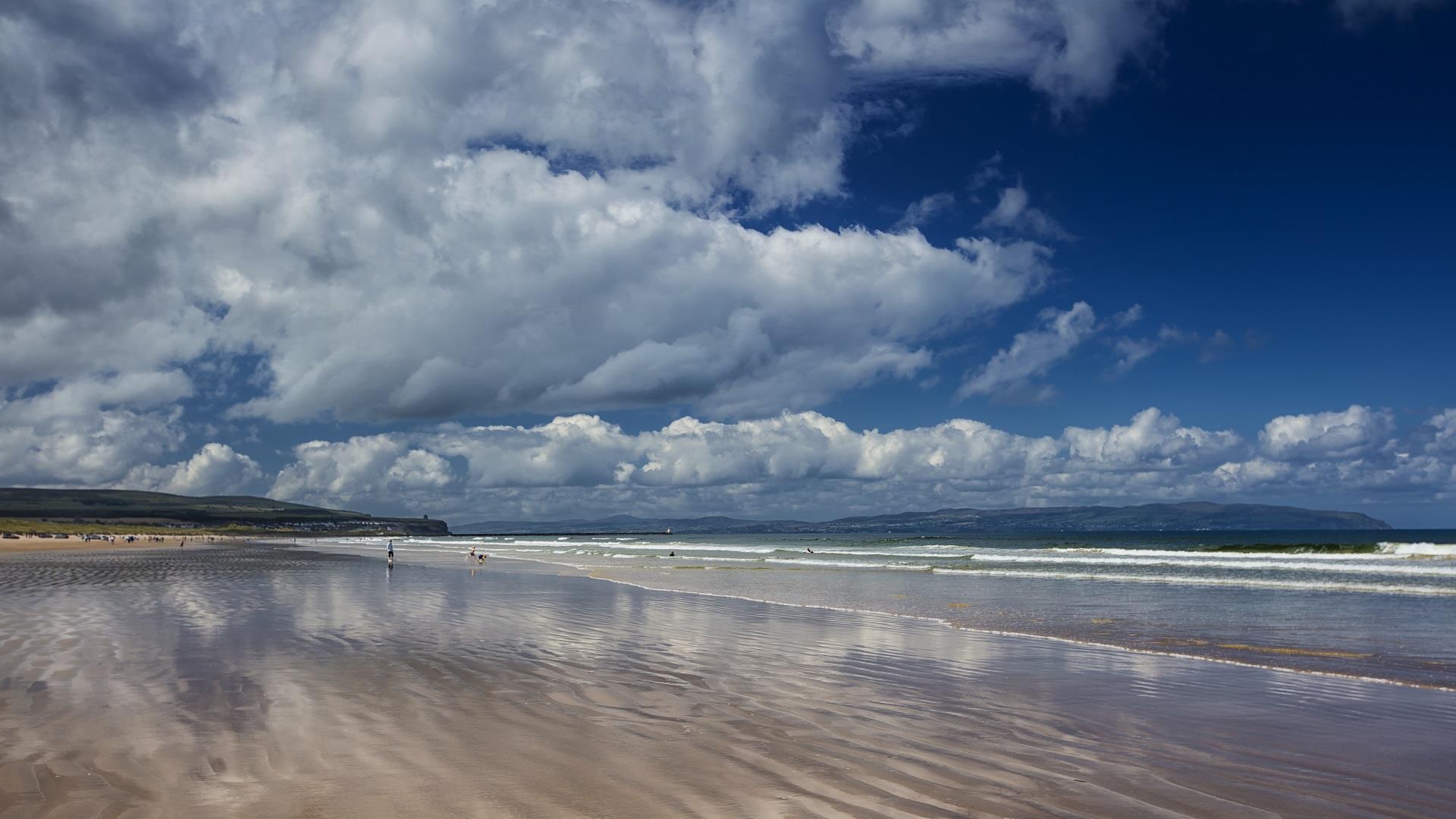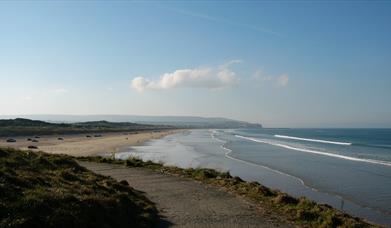Book Tickets Online
About
Portstewart Strand, locally known as ‘The Strand’, has long welcomed visitors to its golden sands. It frequently attains the Blue Flag award for its water quality and beach/dune management and is very popular with families in the summer months and with walkers throughout the year. Walkers can walk the entire length of the beach to the Barmouth, a distance of approx. 1.7 miles, or venture through the dunes and explore the bank of the River Bann for a more challenging walk.
There is a seasonal charge for car parking on the beach, which is seasonally restricted to certain sections of the beach.
What is less known about Portstewart Strand is the towering sand dunes (containing some of Ireland’s tallest dunes) have been declared as an Area of Special Scientific Interest, together with the adjoining Bann Estuary. At this point the River Bann (Northern Ireland’s longest river) ends its journey on entering the North Atlantic at the Barmouth.
ROUTE DESCRIPTION
Starting from the beach entrance, the first section of the walk is a 1 mile stroll along the magnificent strand, heading westwards in the direction of distant Mussenden Temple, a folly perched on the cliff edge in the grounds of Downhill Demesne on the other side of the Bann.
After 1 mile you will arrive at a line of wooden posts strung out across the beach, and at this point the walk heads into the sand dunes. The exact point of entry into the dunes is marked by a lifebuoy station with a No. 10 highlighted on it – head for this & climb the wooden sand ladder. At the top of the sand ladder take the right forked narrow sandy path and keep an eye for white waymarker posts – these posts will lead walkers through the dunes to the estuary.
Points of interest will include an active rabbit warren, with closely nibbled dune grasslands rich in wild flowers. Look out for marram grass, as well as rare pyramidal and bee orchids during the summer months, along with colourful ‘carpet displays’ of plants such as bird’s-foot trefoil, wild pansy and thyme.
Fairly quickly, you will then come out at the river edge and a different world of the Bann Estuary awaits – where a variety of different bird species will now feature. One to look out for is the handsome shelduck!
After turning right onto the estuary you will eventually come to two gates. Take the gate on the left and walk the length of a small beach, then climb up onto the path at the end which eventually takes you to the end of the strand. After about a quarter of a mile the path leaves the river edge very briefly and climbs onto an old railway line embankment – walk along this old disused railway track for another quarter mile, until reaching the river edge again.
At this point the path follows a small sandy embayment for about 200 yards (still going right), before climbing up a number of stone steps (still close to the river edge). From here the path continues along the river edge, only with a bit more height, due to the towering sand dunes rising up. Views really start to open up of the Barmouth, where the River Bann enters into the Atlantic, with the headlands of Donegal in the background. Look out for the relatively unspoilt Victorian seaside resort of Castlerock across the river.
After a short distance the undulating path returns once again to the same beach where you first started on…the only difference being – you now have to walk the entire length of Portstewart Strand to get back to your start point…a tough life walking on a beach! To assist your return stroll, a system of numbered lifebuoy stations from 15 to 1 will count you down, in 200 yard intervals…Go enjoy!
* Please note that National Trust entrance pricing applies for this walk when parking on the beach.
Facilities
Accessibility
- Toilets for disabled visitors
Catering
- Picnic Area
Children & Infants
- Baby changing facilities
Establishment Features
- Toilets
Parking & Transport
- Car parking
- On site parking
- Parking (charge)
- Parking Areas for Disabled Visitors
















